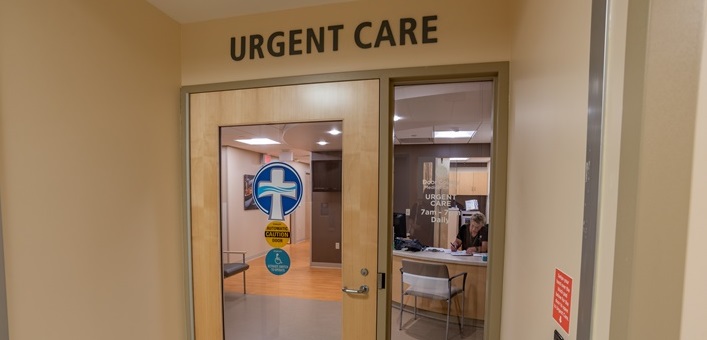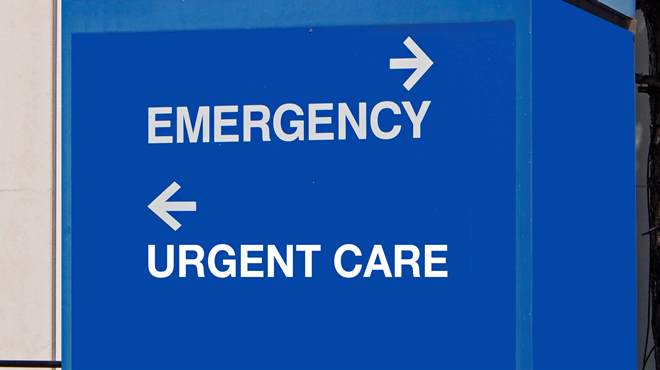Urgent Care vs. Medical care: Which Is Right for Your Requirements?
Urgent Care vs. Medical care: Which Is Right for Your Requirements?
Blog Article
Recognizing the Value of Urgent Care Services for Non-Life-Threatening Medical Issues
The importance of urgent care solutions for non-life-threatening clinical concerns can not be overemphasized, especially in today's health care landscape. These facilities use an important option for clients seeking prompt focus for conditions that require immediate treatment yet do not necessitate a browse through to the emergency clinic. By recognizing the benefits of immediate treatment, such as decreased wait times and expense efficiency, one can much better value their function in patient wellness monitoring. The nuances of just how to navigate these solutions successfully stay to be explored, increasing questions regarding their ideal utilization.
What Is Urgent Treatment?
Urgent treatment refers to a group of medical solutions designed to attend to non-life-threatening conditions that require prompt attention however do not warrant a see to the emergency situation space. These facilities supply a bridge in between medical care and emergency situation services, using accessible health care choices for people experiencing acute medical concerns, such as minor fractures, sprains, infections, or extreme illnesses that arise suddenly.

The extent of solutions supplied by urgent care facilities can differ however typically includes therapy for common ailments like colds, influenza, and allergies, as well as small injuries (urgent care). Furthermore, many immediate treatment centers supply preventative solutions, such as vaccinations and physical examinations, to resolve wider health demands. By providing a convenient choice for immediate clinical issues, these centers play a critical function in the healthcare continuum, making sure that clients obtain proper care when they need it most
Advantages of Urgent Treatment Solutions
Lots of people locate that using immediate care services offers substantial benefits over traditional emergency space gos to or waiting for a main care visit. Immediate care facilities normally have shorter wait periods, enabling people to receive prompt clinical focus when they need it most.
One more benefit is the extensive hours of procedure. Several immediate treatment facilities are open evenings and weekend breaks, suiting people that might not have the ability to see their medical care medical professional throughout normal workplace hours. This versatility makes it easier for patients to access treatment at their ease.
In addition, urgent treatment services typically use a cost-effective choice to emergency clinic. When looking for treatment for minor disorders at immediate care centers instead than hospital emergency divisions., people often face reduced co-pays and general expenditures - urgent care.
Lastly, urgent care centers are equipped to take care of a selection of non-life-threatening problems, offering a broad array of services under one roof. This thorough technique not just streamlines the therapy process yet likewise enhances individual complete satisfaction by delivering punctual and efficient treatment.
Common Problems Treated
What kinds of non-life-threatening conditions can individuals expect to receive therapy for at urgent care? Immediate treatment facilities are outfitted to deal with a vast range of usual medical problems that need prompt interest yet do not position an instant hazard to life. These centers frequently treat conditions such as small cracks, strains, and pressures, providing essential look after injuries that happen throughout day-to-day activities or sports.
Additionally, clients often look for therapy for respiratory infections, including colds, flu, and respiratory disease, where prompt treatment can reduce signs and protect against complications. Skin disease such as breakouts, insect bites, and small burns are likewise generally dealt with, as prompt treatment can reduce discomfort and minimize the danger of infection.

Contrasting Urgent Care and Emergency Clinic

One significant difference waits times; immediate treatment centers commonly have much shorter delay link times contrasted to emergency spaces, which can be congested with more crucial cases. This efficiency allows patients to obtain prompt therapy for their conditions.
From an economic viewpoint, immediate treatment visits tend to be more economical than emergency area visits. Insurance coverage copays and out-of-pocket costs are commonly lower at immediate treatment facilities, making them a much more cost-effective selection for non-emergency scenarios.
Exactly How to Choose an Urgent Treatment Facility
Picking the appropriate urgent care center can significantly improve the high quality of treatment gotten throughout a non-life-threatening medical problem. When choosing an immediate care facility, several vital elements should be taken into consideration.
First, assess the facility's accreditation and licensing. Some urgent care facilities specialize in details areas, while others offer thorough treatment for various medical concerns.
Additionally, take into consideration the location and hours of operation. An easily located center with extended hours can be important for prompt treatment. It's also suggested to inspect the center's wait times and client evaluations, which can supply insights into the total client experience.
Final Thought
In conclusion, urgent visit treatment services play an essential duty in attending to non-life-threatening clinical problems successfully. Inevitably, recognizing the relevance of immediate treatment centers adds to boosted healthcare management and person fulfillment.
Lots of people discover that using urgent treatment solutions offers significant benefits over standard emergency space gos to or waiting for a primary treatment visit. Numerous immediate care centers are open evenings and weekend breaks, accommodating individuals who may not be able to see their main care doctor throughout normal workplace hours. Urgent care facilities are designed to address non-life-threatening conditions, such as minor cracks, infections, and ailments, providing a convenient choice to emergency situation areas for those in requirement of prompt care. Some urgent care facilities specialize in specific locations, while others offer detailed care for different medical issues.
Report this page